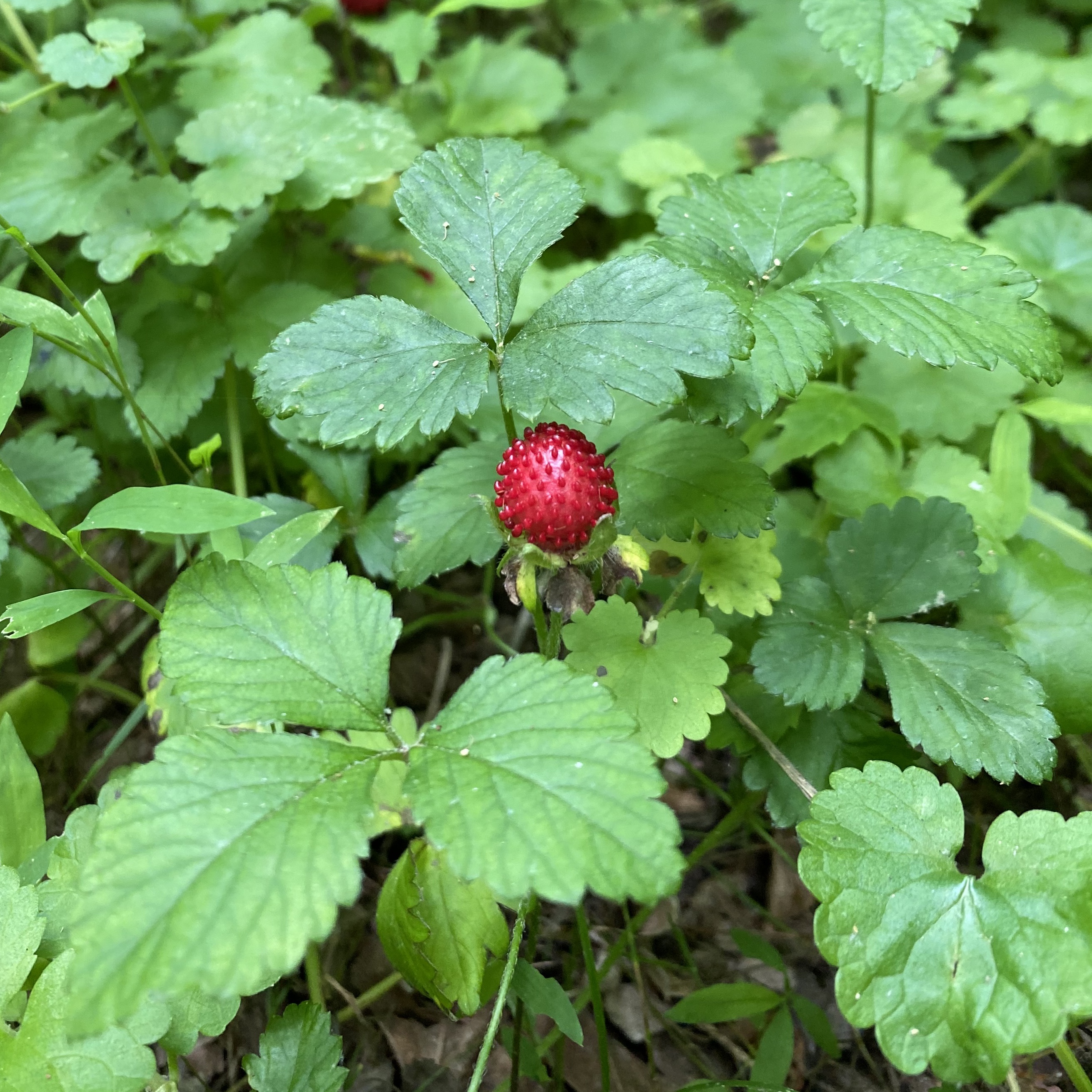If you are hiking and look down, chances are you will see a mock strawberry. Their scientific name is Duchesnea indica or sometimes Potentilla indica. They also are known as false, Indian or wild strawberries. Read more to find out about another non-native plant. As usual, it is an invasive species.
Plant Characteristics
The mock strawberry is a fast growing, creeping, herbaceous perennial. That is a mouthful. This means it spreads quickly, and it comes back every year. It grows almost anywhere.
The roots spread horizontally. They form a node, then another vertical root at the node. This is similar to stinging nettles. They use roots to propogate.
Mock strawberries also use seeds to propagate.
The leaves are trifoliolate. This means there are three leaves on each stem. Usually they are hairy on both sides, but not always. Without using too many technical terms, the leaves are pictured on the right.
The flowers are yellow. The petals are oblong to obovate, and they are as long or longer than the sepals. Sepals are green and leaf-like. They grow under the petals.
The fruit is a bright red and looks slightly similar to a real strawberry. It feels spongy to the touch. The bumps on the outside are the seeds.
Can you eat a Mock Strawberry?
Here are a few things to remember:
First, according to some sources, the fruit and leaves of a mock strawberry are edible. Other sources do not agree. Always do your homework before touching or consuming any plant. Check numerous sources. Be 100% confident in your plant identification skills.
Second, they do not taste very good. Many report that they are tasteless.
Finally mock strawberries are supposed to be high in protein, iron, vitamin C, and a few other things.
Uses for Indian Strawberry
If you read anything about other countries' medicine, you realize that they do not rely on pharmaceuticals as much as we do in the United States.
In traditional herbal medicine the entire plant is used as an anticoagulant, antiseptic, depurative, and febrifuge. A febrifuge reduces fever.
Leaves are used as a poultice, plus it is used to treat some skin problems. Treating skin aliments seems to be the broadest use. Do lots of research before ever using a wild plant for medicinal purposes.
Find out more:
University of Minnesota Extension



